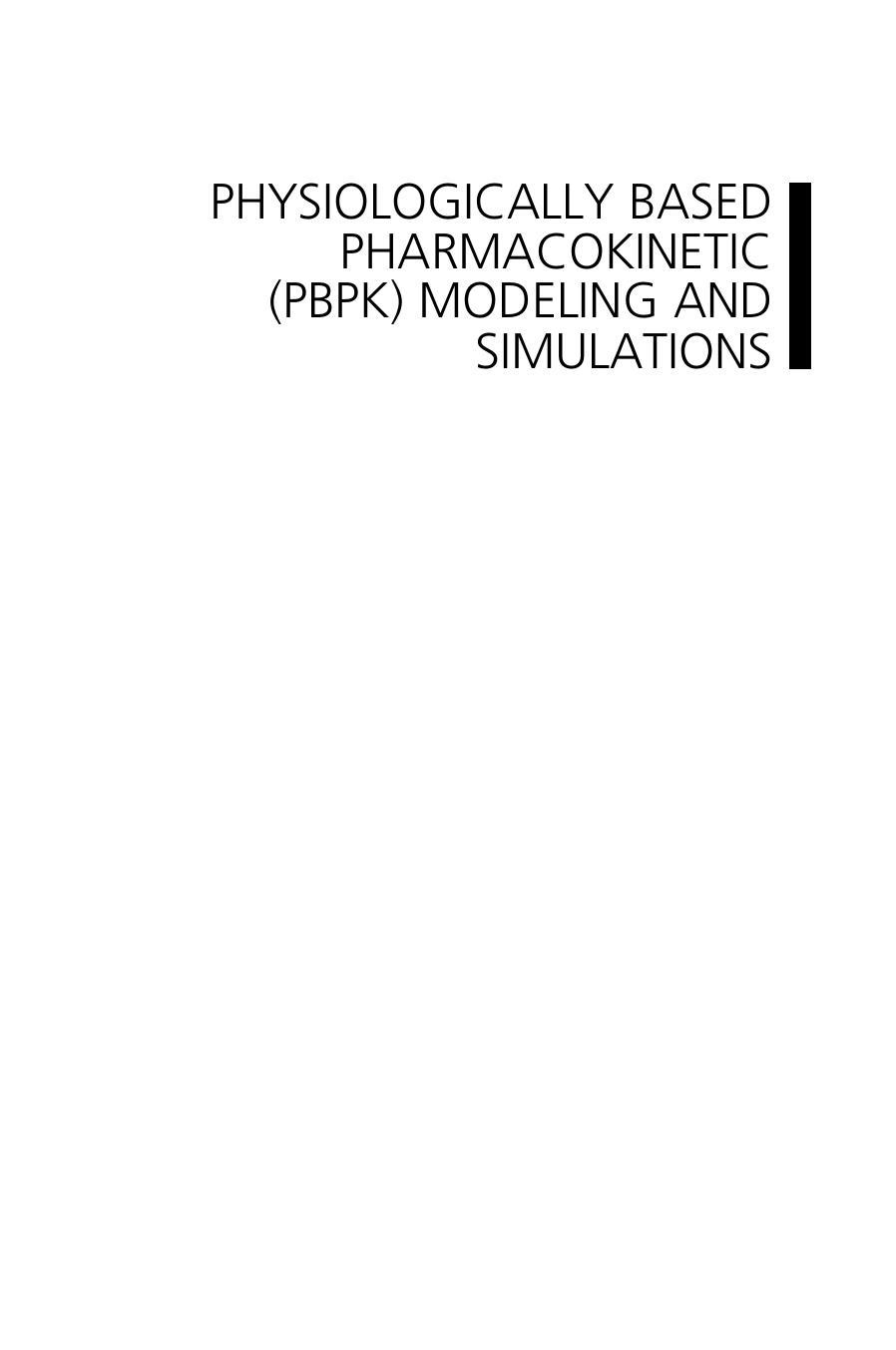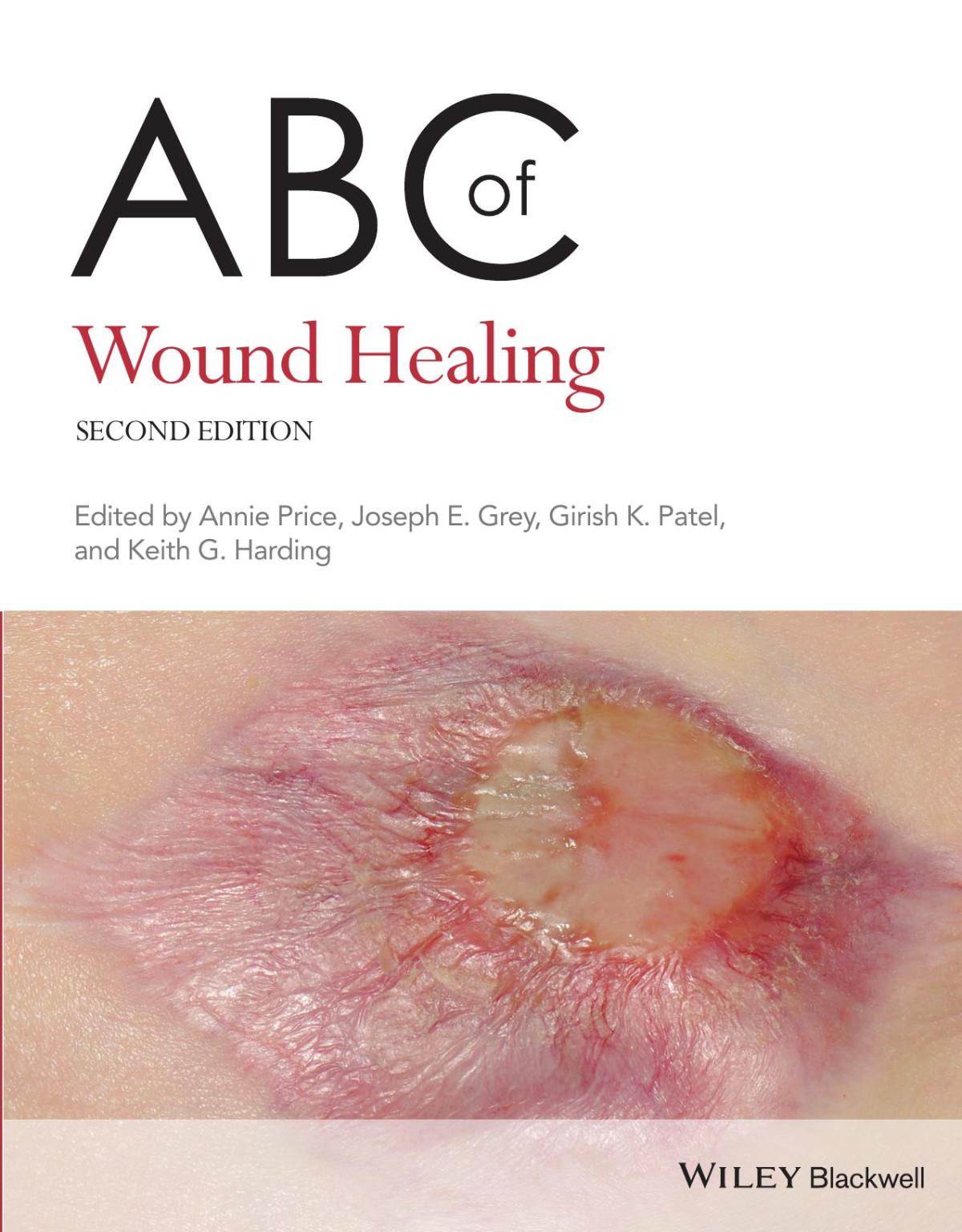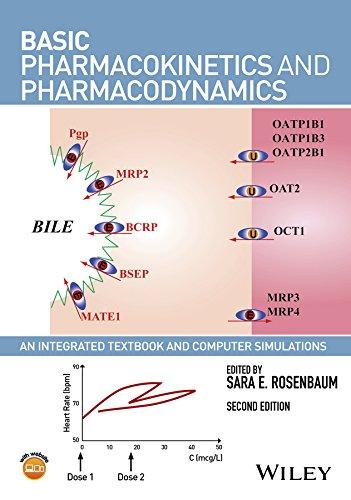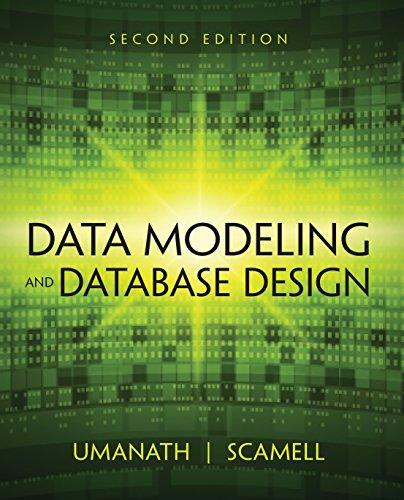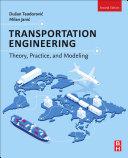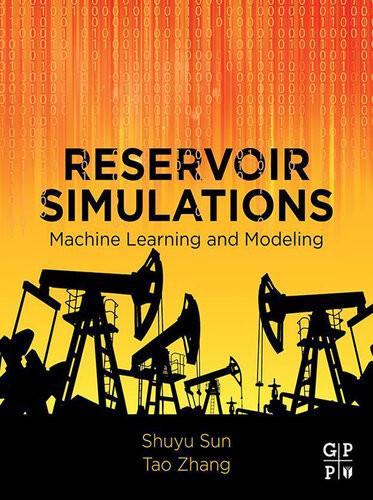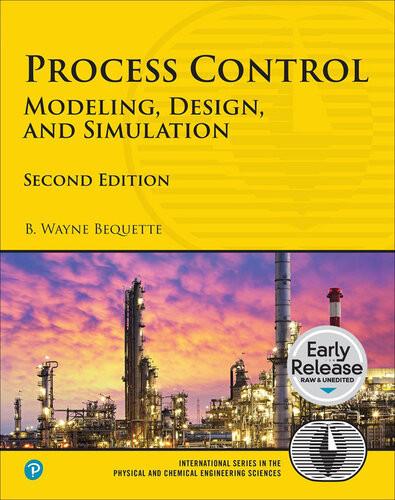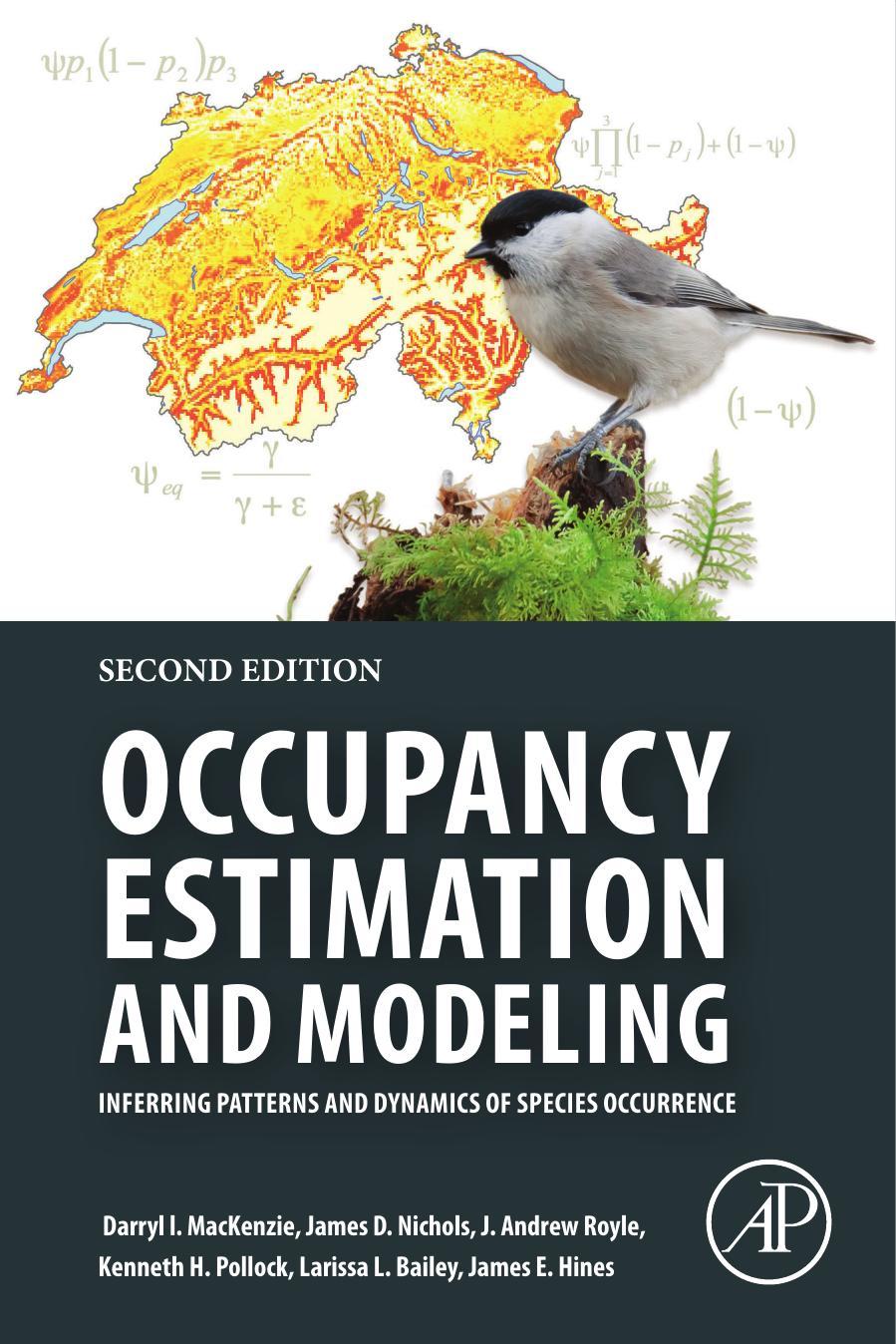Physiologically Based Pharmacokinetic (PBPK) Modeling and Simulations 2nd Edition Sheila Annie Peters
Visit to download the full and correct content document: https://ebookmass.com/product/physiologically-based-pharmacokinetic-pbpk-modelin g-and-simulations-2nd-edition-sheila-annie-peters/
More products digital (pdf, epub, mobi) instant download maybe you interests ...
Reaction Rate Theory and Rare Events Simulations Baron Peters
https://ebookmass.com/product/reaction-rate-theory-and-rareevents-simulations-baron-peters/
Pure Colour: A Novel 2nd Edition Sheila Heti https://ebookmass.com/product/pure-colour-a-novel-2nd-editionsheila-heti/
ABC of
Wound Healing 2nd Edition Annie Price https://ebookmass.com/product/abc-of-wound-healing-2nd-editionannie-price/
Basic Pharmacokinetics and Pharmacodynamics: An Integrated Textbook and Computer Simulations 2nd Edition, (Ebook PDF)
https://ebookmass.com/product/basic-pharmacokinetics-andpharmacodynamics-an-integrated-textbook-and-computersimulations-2nd-edition-ebook-pdf/
Data Modeling and Database Design 2nd Edition, (Ebook PDF)
https://ebookmass.com/product/data-modeling-and-databasedesign-2nd-edition-ebook-pdf/
Transportation Engineering: Theory, Practice and Modeling, 2nd Edition Dusan Teodorovic
https://ebookmass.com/product/transportation-engineering-theorypractice-and-modeling-2nd-edition-dusan-teodorovic/
Reservoir Simulations Shuyu Sun
https://ebookmass.com/product/reservoir-simulations-shuyu-sun/
Process Control: Modeling, Design, and Simulation 2nd Edition B. Wayne Bequette
https://ebookmass.com/product/process-control-modeling-designand-simulation-2nd-edition-b-wayne-bequette/
Occupancy Estimation and Modeling: Inferring Patterns and Dynamics of Species Occurrence Darryl I. Mackenzie & James D. Nichols & J. Andrew Royle & Kenneth H. Pollock & Larissa L. Bailey & James E. Hines
https://ebookmass.com/product/occupancy-estimation-and-modelinginferring-patterns-and-dynamics-of-species-occurrence-darryl-imackenzie-james-d-nichols-j-andrew-royle-kenneth-h-pollock-
PHYSIOLOGICALLYBASED PHARMACOKINETIC (PBPK)MODELINGAND SIMULATIONS Thiseditionfirstpublished2022 ©2022byJohnWiley&Sons,Inc.
EditionHistory
PhysiologicallyBasedPharmacokinetic(PBPK)ModelingandSimulations:Principles,Methods,andApplicationsinthe PharmaceuticalIndustry,1stEdition,©2012byJohnWiley&Sons,Inc.
Allrightsreserved.Nopartofthispublicationmaybereproduced,storedinaretrievalsystem,ortransmitted,inanyform orbyanymeans,electronic,mechanical,photocopying,recordingorotherwise,exceptaspermittedbylaw.Adviceonhow toobtainpermissiontoreusematerialfromthistitleisavailableathttp://www.wiley.com/go/permissions.
TherightofSheilaAnniePeterstobeidentifiedastheauthorofthisworkhasbeenassertedinaccordancewithlaw.
RegisteredOffice
JohnWiley&Sons,Inc.,111RiverStreet,Hoboken,NJ07030,USA
EditorialOffice
111RiverStreet,Hoboken,NJ07030,USA
Fordetailsofourglobaleditorialoffices,customerservices,andmoreinformationaboutWileyproductsvisitusatwww. wiley.com.
Wileyalsopublishesitsbooksinavarietyofelectronicformatsandbyprint-on-demand.Somecontentthatappearsin standardprintversionsofthisbookmaynotbeavailableinotherformats.
LimitofLiability/DisclaimerofWarranty
Inviewofongoingresearch,equipmentmodifications,changesingovernmentalregulations,andtheconstantflowof informationrelatingtotheuseofexperimentalreagents,equipment,anddevices,thereaderisurgedtoreviewandevaluate theinformationprovidedinthepackageinsertorinstructionsforeachchemical,pieceofequipment,reagent,ordevicefor, amongotherthings,anychangesintheinstructionsorindicationofusageandforaddedwarningsandprecautions.While thepublisherandauthorshaveusedtheirbesteffortsinpreparingthiswork,theymakenorepresentationsorwarranties withrespecttotheaccuracyorcompletenessofthecontentsofthisworkandspecificallydisclaimallwarranties,including withoutlimitationanyimpliedwarrantiesofmerchantabilityorfitnessforaparticularpurpose.Nowarrantymaybecreated orextendedbysalesrepresentatives,writtensalesmaterials,orpromotionalstatementsforthiswork.Thefactthatan organization,website,orproductisreferredtointhisworkasacitationand/orpotentialsourceoffurtherinformationdoes notmeanthatthepublisherandauthorsendorsetheinformationorservicestheorganization,website,orproductmay provideorrecommendationsitmaymake.Thisworkissoldwiththeunderstandingthatthepublisherisnotengagedin renderingprofessionalservices.Theadviceandstrategiescontainedhereinmaynotbesuitableforyoursituation.You shouldconsultwithaspecialistwhereappropriate.Further,readersshouldbeawarethatwebsiteslistedinthisworkmay havechangedordisappearedbetweenwhenthisworkwaswrittenandwhenitisread.Neitherthepublishernorauthors shallbeliableforanylossofprofitoranyothercommercialdamages,includingbutnotlimitedtospecial,incidental, consequential,orotherdamages.
LibraryofCongressCataloging-in-PublicationData
Names:Peters,SheilaAnnie,author.
Title:Physiologicallybasedpharmacokinetic(PBPK)modelingand simulations:principles,methods,andapplicationsinthe pharmaceuticalindustry/SheilaAnniePeters.
Description:Secondedition.|Hoboken,NJ:Wiley,2021.|Includes bibliographicalreferencesandindex.
Identifiers:LCCN2021038143(print)|LCCN2021038144(ebook)|ISBN 9781119497684(hardback)|ISBN9781119497769(adobepdf)|ISBN 9781119497790(epub)
Subjects:MESH:Pharmacokinetics|DrugDesign|Models,Biological Classification:LCCRM301.5(print)|LCCRM301.5(ebook)|NLMQV38| DDC615.7–dc23
LCrecordavailableathttps://lccn.loc.gov/2021038143
LCebookrecordavailableathttps://lccn.loc.gov/2021038144
CoverDesign:Wiley
CoverImage:CourtesyofSheilaAnniePeters
Setin9.5/11.5ptTimesbyStraive,Pondicherry,India
10987654321
Tomyreaderswhosetremendoussupportforthefirsteditioninspired metogivemybesttothisedition.
2.4InVitroMethodstoEvaluateDrug–
2.4.1CandidateDrugasaPotentialPerpetrator
2.4.2CandidateDrugasaPotentialVictimofInhibition
3.2.1CompartmentalModelingofLinearandNonlinear Pharmacokinetics(Enzymeand/orTransporterCapacity LimitationasWellasTarget-MediatedDrugDisposition)67
3.2.2PopulationPharmacokinetics 76
3.3Pharmacokinetics/PharmacodynamicsandPK/Efficacy(Exposure/ Response)Modeling 80
3.3.1PK/PDModelsforDirectEffect:Sigmoid Emax Model84
3.3.2PK/PDModelsforDirectEffect:ClassicalReceptorTheory86
3.3.3PK/PDModelsAccommodatingDelayedPharmacological Response 89
3.3.4PK/PDModelsAccommodatingFunctionalAdaptation LeadingtoNonlinearityinPharmacologicalResponsewith RespecttoTime 96
3.3.5PK/EfficacyModeling 97
3.3.6TranslationofPK/PDandPK/EfficacyModelingtoHuman100
3.3.7Average,Minimum,andMaximumSteady-State Concentrations 104
3.3.8EstimationofBiologicallyEffectiveDoseinHuman 107
3.3.9TherapeuticWindow 109
3.3.10StaticModelsforDrugInteractions 109
3.4PhysiologicallyBasedPharmacokinetic(PBPK)ModelingandIts IntegrationwithPharmacodynamicsandEfficacyModels 112
3.4.1PKModelingCompartmentalvsPBPK 112
3.4.2PKVariability:PopulationPK(popPK)ModelingvsPBPK114
3.4.3IntegrationofPBPKwithPD,QuantitativeSystems Pharmacology(QSP)ModelsorQuantitativeSystems ToxicologyandSafety(QSTS) 114
3.4.4PBPKModelstoEvaluateDrug–DrugInteractions 115
4.2 Drug AbsorptionandGutBioavailability
4.2.1SolubilityandDissolutionRate
4.2.2Permeability:Transcellular,Paracellular,andCarrier-Mediated Pathways
4.2.3BarrierstoMembraneTransport – LuminalDegradation,Efflux, andGutMetabolism
SpeciesDifferencesinPhysiology
4.4
4.4.1
4.5.1 InVitro, InSitu, and InVivo ModelsforEffectivePermeability148
4.5.2MeasurementofThermodynamicorEquilibriumSolubility153
4.5.5 InVitro ModelsforGutMetabolismandEstimationofFraction EscapingGutMetabolism
5 PHYSIOLOGICALMODELFORDISTRIBUTION 5.2.1PhysiologicalFactorsandSpeciesDifferencesinPhysiology171
5.3 InSilico ModelsofTissuePartitionCoefficients
5.4.1AssessmentofRateandExtentofBrainPenetration
6.1Introduction
6.2 Factors AffectingDrugMetabolismandExcretionofXenobiotics194
6.3ModelsforHepatobiliaryandRenalExcretion
6.3.1 InSilico Models
6.3.2 InVitro ModelsforHepaticMetabolism
6.3.3 InVitro ModelsforTransporters
6.4PhysiologicalModels
6.4.1Hepato-BiliaryEliminationofParentDrugandMetabolites205
7.1Introduction
7.2 Structure ofaGenericPhysiologically-BasedPharmacokinetic(PBPK)
7.3SomaticCompartments
7.3.1Lungs(
7.3.2ArterialBlood
7.3.3VenousBlood(
8.1Introduction
8.2.1PeptidesandProteins
8.2.2AntibodiesandAntibody-BasedTherapies
8.3PharmacokineticsofTherapeuticProteins
8.3.1Absorption
8.3.2RenalElimination
8.3.3Immunogenicity
8.3.5TransportbyConvectiveandTranscytoticExtravasation239
8.3.6CatabolicElimination(Proteolysis)
8.3.7FcRn-MediatedProtectionofIgGsAgainstCatabolismin FcRn-RichCells
8.3.8Distributionandlymphaticelimination
8.3.9Target-MediatedDrugDispositionandReceptor-Mediated Endocytosis
8.4PBPKModelingofMonoclonalAntibodies
8.4.1FullPBPKModelforMonoclonalAntibodies
8.4.2MinimalPBPKModelforMonoclonalAntibodies
8.5ApplicationsofPBPKModelingofMonoclonalAntibodies253
8.5.1PharmacokineticScaling
8.5.2PBPKIntegrationwithPharmacodynamicsofMonoclonal Antibodies
Distingui shingUncertaintyandVariability
9.5HandlingPopulationVariability
9.5.1 APOSTERIORI and APRIORI ApproachestoHandling PopulationVariability
9.5.2CorrelationsBetweenParameters
9.6.1LocalSensitivityAnalysis(One-at-a-time(OAT)and Derivative-basedMethods)
9.6.2ParameterInteractionsandGlobalSensitivityAnalysis(GSA)275
9.6.3GlobalSensitivityAnalysisforCorrelatedParameters(cGSA)278
9.6.4ApplicationsofSensitivityAnalysisforPBPKModels280
9.6.5LimitationsofGlobalSensitivityAnalysis 281
9.7UncertaintyandPopulationVariabilityinClinicalEfficacyandSafety282
10 NONCLINICAL,CLINICAL,ANDMODEL-INFORMED DRUGDEVELOPMENT 10.1Introduction:AnOverviewofDifferentPhasesofDrugDevelopment294 10.2 NonclinicalDevelopment
10.3.1First-in-Human,Single,andMultipleAscendingDoseStudies302 10.3.2Biopharmaceutics – AbsoluteOralBioavailabilityand BioequivalenceStudy
13.1Introduction:IntegrationofPBPKwithDrugEffectModels354
13.2 Dosing inSpecificPopulations
13.3PBPK/PDforBottom-UpPredictionofInter-PatientVariabilityin DrugResponse
13.4PBPK/PDforPredictingtheInter-PatientVariabilityinResponseto ProdrugsandActiveMetabolites
13.5PBPK/PDWhenSystemicConcentrationsarenottheDriverforDrug
13.5.1Pre-SystemicDrugTarget
13.5.2Effect-SiteDrugConcentrationDifferentfromSystemic Concentration
13.6PBPK/PDforMonoclonalAntibodies
13.7PBPKModelsLinkedtoQuantitativeSystemsPharmacologyand ToxicologyModels
13.7.1PBPK–QSTModelstoPredictDrug-InducedLiverInjury363 13.7.2PBPK–QSTModelstoPredictDrug-InducedCardiotoxicity367
14.2.2InvestigationofPhenotypicEffectsforNMEsPredominantly ClearedbyPolymorphicEnzymeorTransporter
14.2.3ProspectiveNestedDDIStudy
14.2.5PBPKModelingandSimulations
14.2.6ClaimsRelatingtoResultsofDDIStudies
14.2.7ImpactonLabel
14.3PBPKModelingofDifferentTypesofDrugInteractions
14.3.1PBPKModelingStrategy:NewMolecularEntityasVictim ofCYP-BasedDrugInteractions
14.3.2PBPKModelingStrategy:NewMolecularEntityas PerpetratorofCYP-BasedDrugInteractions
14.3.3Non-CYPBasedDrugInteractions
14.3.4Transporter-MediatedDrugInteractions
14.4DDIPredictionswithPBPKModelingandSimulationsinClinical DrugDevelopmentandRegulatorySubmissions
14.4.1DDIPredictionsAlongtheValueChain(Figure14.5)387
14.4.2PossibleRegulatoryOutcomes,BasedonthePredictionsfrom aVerifiedandValidatedPBPKModel
14.4.3RegulatoryAcceptanceofPBPKAnalysesIncludedin RegulatorySubmissions
14.4.4PredictivePerformanceofPBPKModels
14.5ComparisonofDDIPredictionUsingStaticandDynamicModels392
14.6Conclusions
15 DOSEEXTRAPOLATIONACROSSPOPULATIONS(HEALTHYADULT CAUCASIANTOPEDIATRIC,PREGNANTWOMEN,DIFFERENT
15.2 PBPK ModelingStrategyforDoseExtrapolation toSpecificPopulations
15.3PotentialBenefitsofPBPKModelingforDoseExtrapolationsto SpecificPopulations
15.4DoseExtrapolationstoSpecificpopulations
16 DOSEEXTRAPOLATIONACROSSPOPULATIONS:HEALTHY ADULTTOHEPATICANDRENALIMPAIRMENTPOPULATIONS417 16.1Introduction
16.2 PathophysiologicalChangesinOrganImpairment
16.3PBPKModelingStrategy:ModelDevelopment, Verification,Validation,andApplication
16.4BenefitsofApplyingValidatedPBPKModelstoOrgan-Impaired Populations
16.4.1EnhancingRegulatoryConfidenceintheApplication ofPBPKModelingforthePredictionofExposureinthe Organ-ImpairedPopulation
16.4.2ContributionofPBPKtotheTotalityofEvidence inEvaluatingtheEffectofRenalImpairmentonDrug ExposuretoInformLabelling
17.2 In Vitro – InVivoDisconnect,ParameterNon-Identifiabilityandthe ImportanceofIdentifyingFactorsLimitingAbsorptionThrougha DeconvolutionoftheMechanismsContributingtoGutBioavailability431 17.3Non-RegulatoryInternalApplicationsofPBPKModelingand
ReducingAgents(ARAs)
17.4.3InVitro – InVivoCorrelations(IVIVCs)toServe asSurrogateforBioequivalenceTesting(CaseStudy12)445
19.3.2ModelVerificationofPredictedExposureandValidationof
PREFACETOTHESECOND EDITION Iamexcitedtobringoutthismuchimprovedsecondedition,encouragedbythesuccessof thefirsteditionof “Physiologically-BasedPharmacokinetic(PBPK)ModelingandSimulations:Principles,Methods,andApplicationsinthePharmaceuticalIndustry”.TheapplicationsofPBPKmodelingandsimulationshaveexponentiallygrownsincethepublicationof thefirsteditionofthebookin2012.Sincethattime,asurgeinPBPKregulatorysubmissions haspromptedtheregulatoryagenciestoreleaseguidelinesforthereportingofPBPKmodelingresultsthataccompanysubmissions.
TheadverseimpactoftheCOVID-19pandemiconglobaleconomiesisstillbeing evaluated.Pharmacompanieshavehadtheirfairshareoflossestoo.Clinicalstudies forvariousindicationshavebeenaffectedbystretchedhealthcareinfrastructure,recruitmentchallenges,lockdown,logisticsissues,andconfoundingdiseaseinfluenceonoutcomes.AlongwithWorldHealthOrganization’sSOLIDARITYtrialandInstitut nationaldelasantéetdelarecherchemédicale(INSERM)’sDiscoverytrial,nearlythousandclinicalstudiesrelatedtoCOVID-19havebeenregisteredworldwideinthefirsthalf of2020.Inaraceagainsttimetobringinnovativemedicinestothemarket,aheightened needforModel-InformedDrugDevelopment(MIDD)andthetotalityofevidenceitadvocateshasbecomeapparent.TheapplicationsofPBPKmodeling,animportantcomponent ofMIDD,supportingdoseoptimizationandassessmentofbenefit-riskratioshavebeen furthercatalyzedbythepandemic.
Thebookisintendedtoservetheinterestsofabroadanddiverseaudiencefromacademia,industry,andregulatoryagencies.Similartothefirsteditionofthebook,thissecondeditionhasasectionthatcoverstheprinciplesunderlyingpharmacokinetics,drug interactions,andphysiologicalmodelingofpharmacokineticprocessesaswellasinterindividualvariabilityforsmallmoleculedrugsandbiologics.Thesecondpartexposesthe readertothepowerfulapplicationsofPBPKmodelingalongthevaluechainindrugdiscoveryanddevelopment.Tofacilitatepotentialuseofthebookincoursesorworkshops,a newthirdsectionprovidingcasestudiesinthedifferentareasofapplicationofPBPKmodelinghasbeenintroducedinthiseditionattherequestofreadersandreviewers.Mostof thesecasestudiesarebuiltusingPK-Sim®,acomprehensivesoftwaretoolwithinthe OpenSystemsPharmacologySuiteforthephysiologicallybasedpharmacokineticmodelingofsmallandlargemolecules.
Inadditiontointroducingathirdsectiontothebook,thissecondeditionsimplifies complextopicsandprovidesabalancedviewofthevastpotentialofPBPKmodeling alongsidecurrentchallenges.Section-Iprovidessubstantiallyrevisedandreorderedcontentwithupdatedliteratureinallchapters.AnewchapterhasbeenaddedonNonclinical, ClinicalandModelInformedDrugDevelopment.ChaptersinSection-IIareentirelynew andfocusonthevastarrayofapplicationsinthefield.Two-thirdsofthefiguresinthe secondeditionareeitherrevisedornew.
IhopethattheinclusionofrecentadvancesinPBPKmodelingandtherevisionsmade inthecurrenteditionwillservetobenefitandengagethereaders.
PREFACETOTHEFIRSTEDITION Physiologically-basedpharmacokinetic(PBPK)modellinghasmaderapidstridesinthe pharmaceuticalindustryinthelastdecadeorso,thankstoanincreasingawarenessofthe potentialapplicationsofthispowerfultool.Aspharmaceuticalcompaniesareworkingto integratePBPKmodellingintotheirleadselectioncycleandclinicaldevelopment,theavailabilityofcommercialsoftwarehasplayedakeyroleinenablingeventhosewithoutmodellingexpertisetocomeonboard.However,thisentailstheriskofmisuse,misinterpretation orover-interpretationofmodellingresults,iftheprinciplesandunderlyingassumptionsof PBPKmodellingarenotclearlyunderstoodbytheusers.Today,thechallengefacingpharmaceuticalcompaniesiseducatingandtrainingtheirstafftoachieveaneffectiveapplication ofPBPK/PDinprojectsacrossthevaluechain.Inthefuture,providersofeducationshould takeontheresponsibilityofmakingavailable,modellerswithappropriateskills.Giventhe complexityofPBPKmodelling,itiscertainlynotaneasytaskforabeginnerwithlittleorno backgroundtounderstandthemodelstructureandtobeawareofitslimitations.Thelackof atextbookonPBPKhasbeenafurtherdeterrent.Itishopedthatthebookwillserveasa primarysourceofinformationontheprinciples,methodsandapplicationsofPBPKmodelling,exposingthepowerofalargelyhiddenandunexploredtool.Applicationsinthe pharmasectorwillbethemainfocus,asapplicationsinenvironmentaltoxicologyand humanhealthriskassessment,havealreadybeenthesubjectofapreviouspublication.
Targetaudiencesforthebookincludestudentsandresearchersintheacademia,apart fromscientistsandmodellersinthepharmaceuticalindustry.Thebookcanalsobea resourceforR&Dmanagersinthepharmaceuticalindustry,seekingaquickoverview ofthebenefitsofapplyingPBPKmodellingalongthedrugdiscoveryanddevelopment valuechain.AnunderstandingoftheprinciplesofPBPKmodellingbyR&Dmanagement wouldenhancetheiracceptanceandappreciation,whichinturncantranslatetoeffective managerialsupportforPBPKmodelling.Thebookisintendedtoservetheinterestsof boththegeneralreader,whomayonlywantanoverviewoftheapplicationsofPBPKmodellingwithoutwantinganin-depthunderstandingoftheunderlyingmethods,andthespecialistreaderwhomaybeinterestedtobuildnewmodels.Forthegeneralreader,keywords highlightedincapitalsareexplainedattheendofthechapters.Noparticularexpertiseis assumedinordertokeepthebookaccessibletoadiverseaudience.Anextensivelistof bibliographicreferenceswillhelpthespecialistreadertobuildontheconceptsdeveloped inthebook.Ageneroususeoffigurestoillustrateconceptswillhelpthereadertogain valuableinsightsintothisfascinatingsubject.
Thebookcomprisestwoparts.Thefirstpartprovidesadetailedandsystematictreatmentoftheprinciplesbehindphysiologicalmodellingofpharmacokineticprocesses, inter-individualvariabilityanddruginteractionsforsmallmoleculedrugsandbiologics. ThesecondpartexposesthereadertothepowerfulapplicationsofPBPKmodellingalong thevaluechainindrugdiscoveryanddevelopment.
ACKNOWLEDGMENTS MysincerethanksareduetoProf.AminRostami-Hodjeganwhoreviewedchaptersofthe bookrelatingtoapplicationsofPBPKmodeling,despiteotherdemandsonhistime.Being attheforefrontofresearchinthefieldofPBPKmodeling,hissuggestionswerevery valuableinstructuringthecontentandupdatingthechapterswiththelatestdevelopments inthearea.IamgratefultoAdamDarwich,NicolaMelillo,DanLiu,andAlexander Cooperwhosehelpwithreviewingmychaptersisgreatlyappreciated.Iwouldliketo thankmycolleaguesatMerckHealthcareKGaA,JoaoNSPereira,UlrikeGraadhand, AndreasDBecker,andAkashKhandelwalwhoalsohelpedreviewsomeofthechapters, andRainerStrotmannforlettingmeusesomefigureshecreated.Mydeepappreciation goestoChristinaPetersforfindingtimeinthemidstofherbusycareertocreatesome excellentfiguresforthisedition.IwouldliketoacknowledgetheenthusiasticsupportI receivedfromVigneshMurugesanforgatheringsomedataforthebook.Iamextremely gratefultoJanSchlender,AnnikaSchneider,andMichaelKrug,whooverthelasttwo years,devotedtheirtimetocreatingthecasestudiesinPK-SimaswellasHELPmanuals. Thisworkwouldnothavebeenpossiblewithouttheconsistentsupportextendedbymy friendsandfamily.
Thisbookisaccompaniedbyacompanionwebsite
www.wiley.com/go/peters/PBPK_modeling_simulations
Thewebsiteincludescasestudies.
SECTION I PRINCIPLES,METHODS ANDBACKGROUND INFORMATION AREVIEWOF PHARMACOKINETICAND PHARMACODYNAMIC PRINCIPLES CONTENTS 1.1Introduction
1.2PharmacokineticPrinciples................................4
1.2.1RoutesofDrugAdministration........................4
1.2.2IntravenousBolus.................................4
1.2.3PlasmaProteinBindingandBlood–PlasmaRatio.............9
1.2.4Hepatic,Renal,andBiliaryClearances..
1.2.5Extravascular(Subcutaneous,Intramuscular,andPerOral)Absorption16
1.2.6AbsorptionfromSolidDosageForms....................20
1.2.7RoleofTransportersinADME ........................22
1.2.8LinearandNon-LinearPharmacokinetics..................24
1.2.9IntravenousInfusion,RepeatedDosing,SteadyStateKinetics, andAccumulation.................................25
1.2.10ActiveMetaboliteandProdrugKinetics...................28
1.3PharmacokineticVariability..
PhysiologicallyBasedPharmacokinetic(PBPK)ModelingandSimulations:Principles, Methods,andApplicationsinthePharmaceuticalIndustry,SecondEdition.SheilaAnniePeters. ©2022JohnWiley&Sons,Inc.Published2022byJohnWiley&Sons,Inc. Companionwebsite:www.wiley.com/go/peters/PBPK_modeling_simulations
1.1INTRODUCTION Thedoseanddosingfrequencyofadrug(dosageregimen),neededtomaintainanefficaciousconcentrationatthesiteofitspharmacologicalaction,foradurationthatislong enoughtoachievethetherapeuticobjective,shouldbesafeandconvenienttothepatient. Toachievethisoptimalexposureatthetargetsiteofpharmacologicalactioninhumans, therateandextentofmultipleprocesseslikedrugabsorptionfromthesiteofadministrationintosystemiccirculation,tissuedistribution,metabolism,andelimination(ADME) areoptimizedduringleadoptimizationindrugdiscovery.Pharmacokinetics(PK)isthe studyofthefateofdruginthebody,thatdeterminesitsexposure/concentrationatthetargeteffectsite,drivenbyADMEprocesses.Therelationshipoftheexposure/concentration atthetargeteffectsitetotheonset,intensity,anddurationofdrugactionisdeterminedby pharmacodynamics(PD).Awell-defined,quantitativerelationshipbetweendrugconcentrationsinbiologicalfluidsandpharmacodynamiceffectcansupporttheselectionofdose anddosingregimenforearlyclinicaltrials.ThischapterisintendedtoprovideabriefoverviewofPKandPDprinciples.Theforthcomingchapterswilldrawheavilyupontheconceptslaidoutinthischapter.
1.2PHARMACOKINETICPRINCIPLES 1.2.1RoutesofDrugAdministration
Commonroutesofdrugadministrationincludeperoral(PO),intramuscular(IM),subcutaneous(SC)intravenous(IV)bolusandinfusion,andintrathecal(aroundthespinalcord). Otherlesscommonroutesincludebuccal,sublingual,rectal,transdermal,inhalational,and topical.Theoralrouteisthemostpreferredroute,butitisnotsuitablefordrugsthatarenot stableinthegut,likeforexamplepeptideandproteindrugs.
1.2.2IntravenousBolus
Intravenous(IV)administrationensuresrapid,completedrugavailabilityfordrugsthatare notintheformofsuspensionsoroils,bybypassingabsorptionbarriers.Drugshavingpoor oralbioavailabilityorcausingunacceptablepainwhenadministeredintramuscularlyor subcutaneouslymaybeadministeredbythisroute.However,itispotentiallyhazardous,
astheinitialhighdrugconcentrationmayelicittoxiceffects.Therefore,theuseofIVroute isrestrictedtosituationsdemandingarapidonsetofactionasinanesthesia,emergency medicineetc.or,whenthepatientispersistentlyvomiting,isunconsciousoristooyoung tosafelyswallowsolidformsofmedication.ControlleddrugadministrationthroughIV infusionsoffersonewaytomitigatetheriskoftoxicity,astheinfusionmaybehaltedinthe unexpectedeventofadverseeffectsduringadministration.Apartfromcausingsevere pain,intra-arterialadministrationisassociatedwiththeriskofdangerouspressurebuildup inthemusclesleadingtodecreasedbloodflowandconsequentlytonerveandmuscledamage.Intra-arterialinjectionsarethereforereservedtosituationsinwhichlocalizationsto specifictissuesaredesired.
1.2.2.1Zero-andFirst-OrderKinetics. Drugeliminationfromthebodymayfollow zeroorfirst-orderkinetics(Figure1.1).Inzero-orderkinetics,aconstantamountofthe drugiseliminatedinacertaintime(e.g.,20mgperhour).Infirst-orderprocesses,aconstantproportionofthedrugiseliminatedinacertaintime(e.g.,20%perhour).Though relativelyrare,zero-orderkineticsmaybeencounteredinintravenousinfusionsaswellas ineliminationofsomedrugs(e.g.ethanol)butwillnotbefurtherelaboratedhere.
ThetemporalchangesinthedrugconcentrationsfollowinganIVbolusinjectionof 50mgofadrugwithfirst-orderkineticsaredepictedinFigure1.2.Theslopeandarea underthecurve(AUC)arethetwoparametersthatcanbeextractedfromtheconcentration-timeprofileasshowninthesemilogarithmicandlinearplotsrespectively.Other usefulpharmacokineticparametersmaybederivedfromthesetwoparameters,aswill becomeevidentfromthemathematicalderivationsbelow.
1.2.2.2Clearance,VolumeofDistribution,Half-life,and AUC. Thefirst-order rateequationdepictingtherateofchangeofdrugconcentrationsintheblood(C)is givenby
Figure1.1. Temporalchangesindrugconcentrationsfor(a)zero-orderand(b)first-order kinetics.
Dose(mg)1000 kel (h–1)070 half-life(h)1
Figure1.2. Linear(a)andsemilogarithmic(b)plotsofdrugconcentrationsvs.time.Area underthecurve(AUC)andslopearethetwoparametersthatcanbeobtainedfromthe plot. C2 and C1 aredrugconcentrationsattimes t2 and t1 respectively. kel,first-order eliminationrateconstant; CL,isthetotaldrugclearance;and V,volumeofdistribution.
where A istheamountofdruginthebodyatanytime, t, kel isthefirst-orderelimination rateconstant,and V isthevolumeofdistributionofthedrug.Theproductof kel and V is definedasthetotalclearance, CL,ofthedrugfromblood.
IntegratingEquation1.1( dC/dt=kel × C),
Takingnaturallogarithmsonbothsides,
Thus, kel maybeobtainedbymeasuringtheslopeofasemilogarithmicplotofdrug concentrationvstime(Figure1.2).
Similarly,integratingEquation1.2( dA/dt=kel × A)yields
where A0 istheinitialamountofdruginthebody,thedoseadministeredasIVbolus. Bringing A0 totheleft-handside,Equation1.5becomes,
Takingthenaturallogarithmsonbothsidesoftheresultingequationleadstothe following:
Thehalf-life(t1/2)ofadrug,definedasthetimetakenforhalfoftheadministereddrug togeteliminatedfromthebody(timetakenfordrugamountinbodytogofrom A0,to A0/2, ortimetakenforthedrugconcentrationtobehalved),isgivenby:
UsingEquation1.8,thehalf-lifeofadrugcanbecalculatedfromtheeliminationrate constant kel whichisobtainedfromthesemilogarithmicplotofconcentrationvs.time (Figure1.2).
IntegratingtheEquation1.2( dA=CL × Cdt)yields
where AUC istheareaunderthedrugconcentration-timeprofile(Figure1.2),whichmay beestimatedfromtheplotbyapplyingthetrapezoidalrule.Recognizingthattheintegral dA overtime0to t isthedose,Equation1.9becomes,
Knowingthedoseadministeredandthe AUC,clearancecanbecalculatedusing Equation1.10.Thevolumeofdistribution, V,ofthedrugcanbedeterminedusing Equation1.11,knowingthatclearanceistheproductof kel and V.
Mostsmallmoleculedrugsbindreversiblytoplasmaproteinssuchasalbuminand alpha-glycoprotein.Drugbindingtoplasmaproteinsisofmajorinterestinpharmacokineticsasitimpactsbothclearanceandvolumeofdistribution.Thusfar,thetermclearance referstobloodclearance.However,measurementsofdrugconcentrationsareoftendonein plasma,aswholebloodcontainscellularelements(redandwhitebloodcells,plateletsetc.)
andproteins(albumin,glycoproteins,globulin,lipoproteinsetc.).Theclearanceofadrug determinedusingtheAUCestimatedfromplasmadrugconcentration-timeprofileis referredtoplasmaclearance.Toconvertplasmaclearancetobloodclearance,thedistributionofadrugbetweenbloodandplasmashouldbemeasured.Theratioofdrugconcentrationsinbloodtoplasmaisknownasblood–plasmaratio(R).
Meanresidencetime isaparametercloselyrelatedtohalf-lifeandisdefinedasthe averagetimedrugmoleculesspendinthebodybeforebeingeliminated.Itisexpressedas thesumoftheresidencetimesofalldrugmolecules,dividedbythetotalnumberofmolecules.If dAe isthenumberofdrugmoleculesexitingthebodyattimeinterval t, MRT is givenby:
DifferentiatingEquation1.5(
Recognizingthattherateofdeclinein A = rateofamountexitingthebody, Ae:
Substitutingfor dAe usingEquation1.15inEquation1.12anddividingbothnumeratoranddenominatorby kel,weget
Thenumeratorofequationisthefirstmomentoftheconcentration–timeintegral,or theareaunderthecurveformedbytimeandtheproductofconcentrationandtime,also calledtheareaunderthefirstmomentcurve(AUMC).Thedenominatorofequationisthe sameas AUC asshownbelow:
Thus, MRT foranIVbolusisgivenbytheratioof AUMC and AUC
1.2.3PlasmaProteinBindingandBlood–PlasmaRatio Drugsreversiblybindtoplasmaproteinsdependingupontheirlipophilicityandionizability.Ingeneral,thegreaterthelipophilicityofacompound,thegreateritsextentofplasma proteinbinding.Thebindingequilibriumcanberepresentedas:
[P]isproteinconcentration; Cu and Cb aretheunboundandboundconcentrationsofthe drugatequilibrium.Theequilibriumconstant, KA,alsocalledtheaffinityconstantis givenby
n isthenumberofbindingsitespermoleofthebindingprotein.Sincethetherapeuticconcentrationsofmostdrugsarelowrelativetothetotalproteinconcentration,[P]canbe assumedtobethetotalproteinconcentration[P]Total.Thefractionunboundinplasma (fup)canbeobtainedfromEquation1.20intermsof[P]Total orintermsoftheconcentrationsof α1-acidicglycoprotein(AGP),[P]AGP andalbumin[P]albumin:
Thefractionunboundinplasma(fup)thusdependsontheconcentrationsofplasma proteinsandtheaffinityofthedrugtotheplasmaproteins.Albuministheprincipalprotein towhichmanydrugsbind,followedbyAGP.Otherplasmaproteinsincludelipoproteins andglobulins.TheconcentrationsofvariousplasmaproteinsareshowninTable1.1. Albuminisdistributedinintravascular(plasma:43g/kgorgan)andextravascularorgans
TABLE1.1.Plasmaproteins.
Plasmaproteins
Albumin
α1-acidicglycoprotein (AGP)
Binding
Molecular weight(Da) Concentration (μM)
Bindsmainlytoanioniccompounds67000500–700
Bindsmainlytocationicdrugs.E.g.: tricyclicantidepressants
420009–23
(muscle:2.3g/kg,skin:7.7g/kg,liver:1.4g/kg,gut:5g/kg,andothertissues:3g/kg). Albuminexistsabundantlyintheinterstitialfluids.
Albuminhassixdistinctbindingsites,twoofwhichspecificallybindtolong-chain fattyacids,anotherselectivelybindstobilirubinandtwoothersbindtoacidicandlipophilicdrugs.Oneofthesetwodrugbindingsitesbindsdrugslikewarfarin,andphenylbutazone,whiletheotherbindsdrugssuchasdiazepamandibuprofen.Drugsbinding todifferentbindingsitesdonotcompetewithoneanother.Whenmorethan20%ofthe sitesareoccupied,concentrationdependenceofbindingbeginstogetappreciable,ultimatelyleadingtosaturationathigherconcentrations.Saturationofalbuminisrareand restrictedtodrugs(especiallyacids)withhi ghtherapeuticconcentration.However,the bindingsitesofafewdrugssuchastolbutam ideandsomesulfonamidesaresaturated evenattherapeuticconcentrations.AGPconcentrationsbeingmuchlowercompared toalbumin,saturationofAGPoccursatlowertherapeuticconcentrations.Theconcentrationsofseveralplasmaproteinscanbealteredbymanyfactorsincludingstress,surgery,liverdysfunction,andpregnancy.Mostcommonly,diseasestatesincreaseAGP concentrationwhilereducingalbuminconcentration.HigherlevelsofAGPhavebeen reportedinobesepatientswithnephrosis.Stress,cancer,andarthritishavebeenassociatedwithlowerAGPlevels.NeonateshavehigherAGPlevels.AGPisassociatedwith ahigherinter-individualvariabilitycomparedtoalbumin.Reducedlevelsofalbumin havebeenreportedinmyalgiapatients.Drugsthatarehighlyboundtoplasmaproteins areconfinedtothevascularspaceandarenotreadilyavailablefordistributiontoother tissuesandorgans.Manycarboxylicaciddrugsarenoteasilydisplacedfromplasma proteinsandhavealowdistributionvolume.However,thisisnottrueiftheaffinity ofadrugtotissueproteinsishigherthanthattoplasmaproteins.Ultrafiltrationandequilibriumdialysisarethetwocommonlyemployedmethodsforthedeterminationof plasmaproteinbinding(Wrightetal.,1996).Albuministheprincipaldrug-bindingproteinintissuesfollowedbyligandin.Measurementoftissuebindingisnotasstraightforwardasthatinplasma,asthetissuemustbedisrupted,anditisnotreadilyaccessiblefor sampling.Tissueproteinscannotbeeasilyseparatedintoitsconstituentsandcannot easilybequantified.
Theclearance( CL )ofmanylowhepatic-extractiond rugsislimitedbyproteinbinding.Onlytheunbounddrugisavailableforglomerularfiltrationandthereforeforrenal elimination.Anincreaseinunbounddrugconc entrationduetoareducedplasmaprotein bindingwillenablehighertissuedistributionandhigher CL .However,sincethehalf-life ofadrugisdirectlyproportionaltothedistr ibutionvolumeandinverselyproportionalto CL ,thereisnoneteffectonthehalf-life.T hus,changesinplasmaproteinbindingofa drugarenotlikelytobeclin icallyrelevant(BenetandHoener,2002)exceptinthefollowingcases:
(i)Thedrugis>98%boundtoplasmaproteins.Inthiscase,evenasmallshiftin plasmaproteinbindingcanhaveasubstantialeffectontheclearancebutless soonthedistributionvolume,thustemporarilyalteringtheunbounddrug concentrations.
(ii)Thedrughashighhepaticextraction.Theclearanceofsuchdrugswillbedependentonlyonthehepaticbloodflowrateandnotontheproductof fup ×CLint.Thus, anincreaseindistributionvolumeisnotsufficientlycompensatedforbyan increasein CL,leadingtoatemporaryincreaseinunbounddrugconcentrations.
(iii)Thereisarapidequilibriumbetweendrugconcentrationandpharmacological response(e.g.,lidocainewithaPK-PDequilibrationtimeoftwominutes)comparedtothetimerequiredforthebodytoregainequilibrium(about30minutes). Manyanti-arrhythmicdrugsandanestheticsrequireonlyashorttimeforachange inconcentrationtocauseachangeindrugeffect.Inthesecases,theresponseis sensitivetosmalltransientchangesinunbounddrugconcentrations.
Differencesinunbounddrugconcentrationsdiscussedin(i)or(ii)willhaveagreater impactonadrugwithanarrowtherapeuticwindow/safetymargin.Scalingofpharmacokinetic(PK)parameterslikeclearanceorvolumeofdistributionortranslationofpharmacodynamicproperties(Mageretal.,2009)frompreclinicalspeciestomanshouldalways bedonewiththeunboundparameters.Anycomparisons/correlationsofPKparameters shouldalsobedonewithunboundvalues.
Somedrugsalsobindtoanddistributeintoerythrocytes,themaindriversbeinglipophilicity,pKaandactiveuptakeintotheerythrocytes.Bindingsiteswithinerythrocytesare hemoglobin,proteinslikecarbonicanhydrase,andplasmamembrane.The blood–plasma concentrationratio (R)ofadrugisameasureofitsbindinganddistributiontoerythrocytes relativetoplasma.Acompoundhavingasimilarextentofbindingtotheconstituentsof erythrocytesandplasmahasablood–plasmaratioof1.Acidstendtohave R valuesof around0.5andrarelyexceed1,andbasestendtohaveahigherrangeofvalues,often exceeding1whileneutralsandampholyteshavevaluesofaround1(Hinderling, 1997).Uchimuraetal.(2010)describeseveralmethodstodetermine R.Commonly,it isdeterminedbymeasuringtheconcentrationsof 14C-labelleddruginerythrocytes(Ce) andplasma(Cp)infreshlycollectedblood.Then,knowingthehematocrit, H (thevolume fractionofbloodoccupiedbyerythrocytes), R isobtainedasfollows:
AccordingtoEquation1.21,consideringanaverage H of0.45,theminimumvalueof R canbe0.55whichcorrespondstonodistributionintoerythrocytes.However,thereisno upperlimit.Fortacrolimus, R isashighas55andexhibitsconcentrationdependence (Juskoetal.1995). R canalsobepredicted(Paixãoetal.,2009).
Partitioningcanbefastforsomedrugsanddistributionequilibriumisreachedwithin afewsecondstominutes.However,manydrugswithprimaryaminegroupsshowdelayed equilibriumprobablyduetotheformationofSchiffbaseswithmembranefattyacidsand aldehydes.Whilethedisplacementoftheplasma–protein–bounddrugtotheunboundis rapid(exceptforproteinmolecules),displacementoferythrocytebounddrugisrelatively slow.Foracidswithhighplasmaproteinbinding,distributionintoerythrocytescansignificantlyaffectitsdistributionvolume,asothertissuecompartmentsarenotassignificant. Ifblood–plasmaconcentrationratiosexceed1,asisthecaseforlipophilicbases,then plasmaclearancesignificantlyoverestimatesbloodclearanceandcouldevenexceed hepaticbloodflow.Thisisbecausetheconcentrationsmeasuredinplasmawillalways bemuchsmallercomparedtothatmeasuredinwholeblood.Thisisduetogreaterdistributionintotheerythrocyteswhen R is>1.Thus,bloodclearanceisrelatedtoplasmaclearanceandblood–plasmaratiobythefollowingequation:
